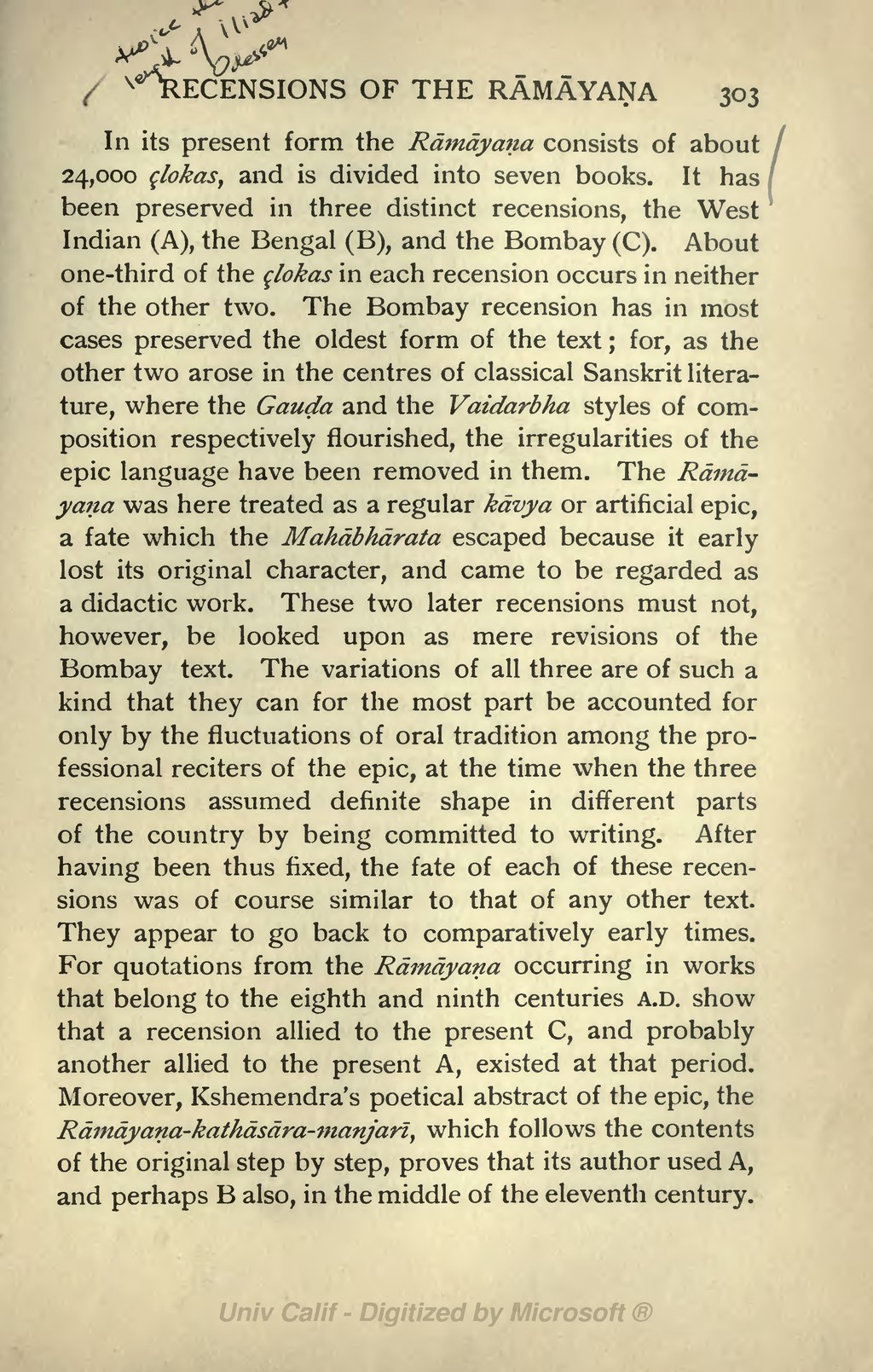In its present form the Rāmāyaṇa consists of about 24,000 çlokas, and is divided into seven books. It has been preserved in three distinct recensions, the West Indian (A), the Bengal (B), and the Bombay (C). About one-third of the çlokas in each recension occurs in neither of the other two. The Bombay recension has in most cases preserved the oldest form of the text; for, as the other two arose in the centres of classical Sanskrit literature, where the Gauḍa and the Vaidarbha styles of composition respectively flourished, the irregularities of the epic language have been removed in them. The Rāmāyaṇa was here treated as a regular kāvya or artificial epic, a fate which the Mahābhārata escaped because it early lost its original character, and came to be regarded as a didactic work. These two later recensions must not, however, be looked upon as mere revisions of the Bombay text. The variations of all three are of such a kind that they can for the most part be accounted for only by the fluctuations of oral tradition among the professional reciters of the epic, at the time when the three recensions assumed definite shape in different parts of the country by being committed to writing. After having been thus fixed, the fate of each of these recensions was of course similar to that of any other text. They appear to go back to comparatively early times. For quotations from the Rāmāyaṇa occurring in works that belong to the eighth and ninth centuries A.D. show that a recension allied to the present C, and probably another allied to the present A, existed at that period. Moreover, Kshemendra's poetical abstract of the epic, the Rāmāyaṇa-kathāsāra-manjarī, which follows the contents of the original step by step, proves that its author used A, and perhaps B also, in the middle of the eleventh century.
